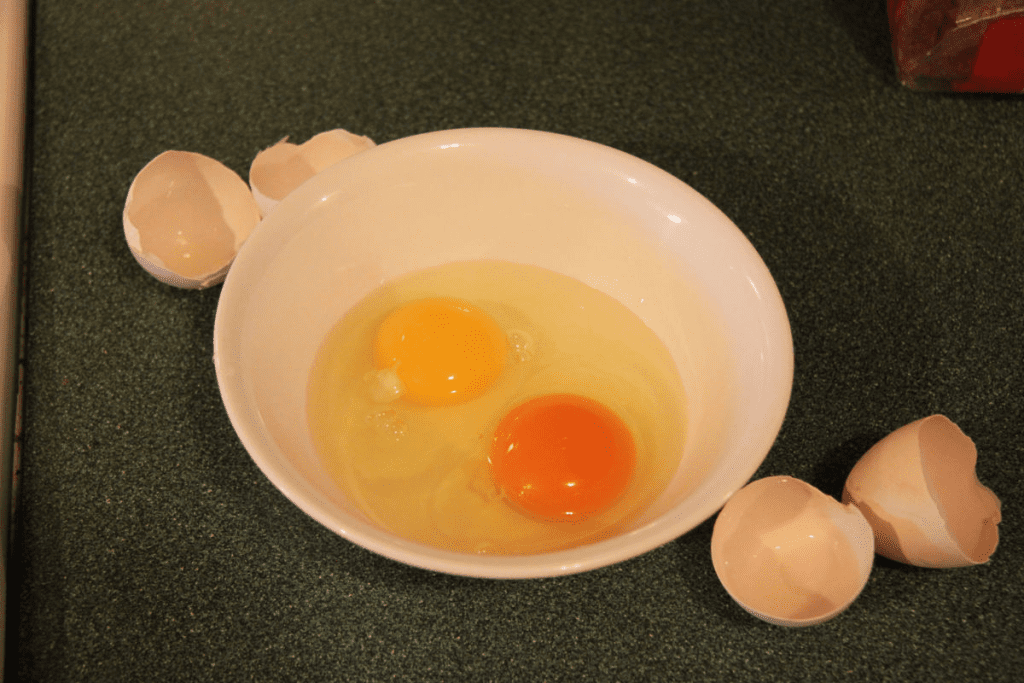Eggs are a breakfast staple, versatile in the kitchen, and packed with essential nutrients. Yet, if you’ve ever wandered through the grocery store and noticed the price difference between brown and white eggs, you may have wondered: why are brown eggs more expensive? Despite popular belief, the answer has nothing to do with the nutritional content or quality of the eggs. Let’s crack into the reasons behind this price discrepancy and unravel the facts about egg colors.
Genetics, Not Nutrition, Determines Eggshell Color

First and foremost, the color of an eggshell is determined by the genetics of the chicken, not by the nutritional value of the egg inside. According to Sharman Hickman, the director of community outreach and education for Hickman’s Family Farms, the breed of the chicken influences whether an egg will have a white or brown shell.
This genetic factor dictates that certain chickens lay white eggs while others lay brown eggs. There’s even more variety in the egg world—some chickens lay blue or green eggs—but the most common colors are white and brown.
Chicken Breeds and Eggshell Color
When it comes to chicken breeds, specific types are associated with the color of the eggs they produce. For example:
- White Eggs: These typically come from Leghorn chickens, which are smaller and more efficient egg layers.
- Brown Eggs: Rhode Island Reds and similar breeds lay brown eggs, but these chickens are often larger and require more feed and energy to produce their eggs.
- Blue Eggs: For those curious about unique colors, chickens like the Ameraucana breed can lay beautiful blue eggs.
Jesse LaFlamme, CEO of Pete and Gerry’s Organic Eggs, explains that all eggs start as white during the formation process. As the egg moves through the hen’s oviduct, a natural chemical coating determines whether the shell remains white or changes to brown, blue, or other colors.
Interestingly, if you’re ever curious about the color eggs a chicken might lay, you can often tell by looking at the color of its earlobes. For instance, chickens with white earlobes tend to lay white eggs, while those with red or darker earlobes typically lay brown eggs.
Why Brown Eggs Cost More
The real reason brown eggs are more expensive comes down to the cost of raising the chickens that produce them. Brown-egg-laying chickens, such as Rhode Island Reds, are generally larger than their white-egg-laying counterparts, such as Leghorns. Because these larger chickens require more feed, space, and energy to produce the same amount of eggs, the cost of maintaining them is higher. This increased cost is passed on to consumers in the form of higher prices for brown eggs.
Hickman points out that the Leghorn breed is particularly favored among farmers due to its efficiency in laying white eggs with minimal feed. In contrast, chickens that lay brown eggs need more resources, making their eggs more expensive to produce.
Debunking the Nutritional Myth

One common misconception is that brown eggs are healthier or more nutritious than white eggs. However, according to Malina Linkas Malkani, MS, RD, CDN, and spokesperson for the Academy of Nutrition and Dietetics, the color of the eggshell has no bearing on the nutritional content, flavor, or quality of the egg inside.
“Choosing between brown and white eggs is a matter of personal preference,” Malkani says. “The color of the eggshell is related to the breed of the hen, not the egg’s nutrient content, flavor profile, quality, or shell thickness.”
In other words, the idea that brown eggs are superior to white eggs is a myth. Both types of eggs can be equally nutritious—it all depends on the hen’s diet, not the color of the shell.
Hen’s Diet Plays a Key Role in Nutrition
While the color of the shell doesn’t affect the egg’s nutritional value, the diet of the hen certainly does. Hens that are fed a nutrient-rich diet—especially one high in Omega-3 fatty acids and vitamin D—will produce eggs that contain higher levels of these nutrients.

This means that if you’re looking for eggs with specific nutritional benefits, it’s not about whether you choose brown or white eggs. Instead, you should look for labels that indicate the hens were fed a fortified diet or raised on pasture, where they have access to natural food sources that boost the nutritional profile of the eggs they lay.
Environmental Factors and Egg Price
Aside from genetics and feed, environmental factors also play a role in the cost of eggs. Free-range or organic eggs, which are often brown, tend to be more expensive due to the additional costs associated with giving chickens more space and access to the outdoors. While these farming practices don’t directly influence the color of the eggs, they often coincide with breeds that produce brown eggs.
Additionally, organic certification, which is more common with brown eggs, involves stricter guidelines for feed and care, further increasing production costs. As a result, brown eggs are often associated with premium farming practices, even though white eggs can also be produced under similar conditions.
What About Shell Thickness and Quality?

Another myth surrounding egg color is that brown eggs have thicker shells than white eggs. The reality is that shell thickness is determined by the age of the chicken, not the color of the egg. Younger hens tend to lay eggs with thicker shells, while older hens produce thinner-shelled eggs. Whether you’re buying white or brown eggs, the shell’s strength will be consistent if the hens are the same age.
Final Thoughts: Brown vs. White Eggs
In the end, whether you choose brown or white eggs comes down to personal preference. The color of the shell doesn’t indicate superior nutrition or quality. The higher price of brown eggs is simply a reflection of the additional resources required to raise the chickens that produce them.
If you’re looking for nutrient-rich eggs, pay attention to the label rather than the color. Eggs from hens fed a high-quality diet will offer more nutritional benefits, regardless of their shell color. As the saying goes, you can’t judge a book by its cover—or in this case, an egg by its shell.


